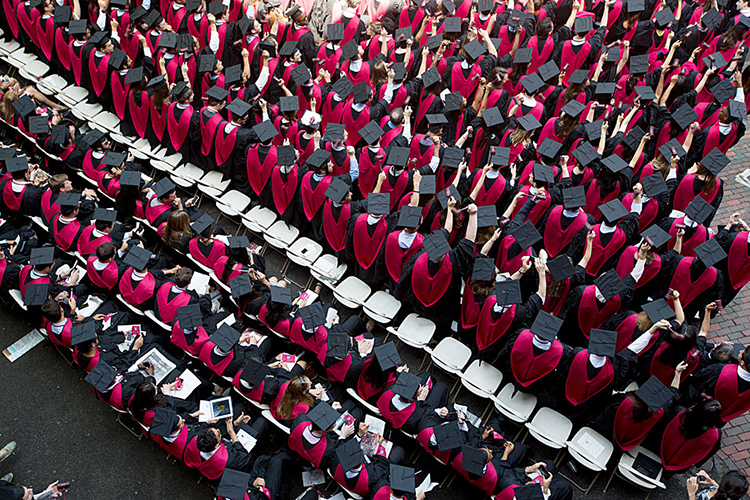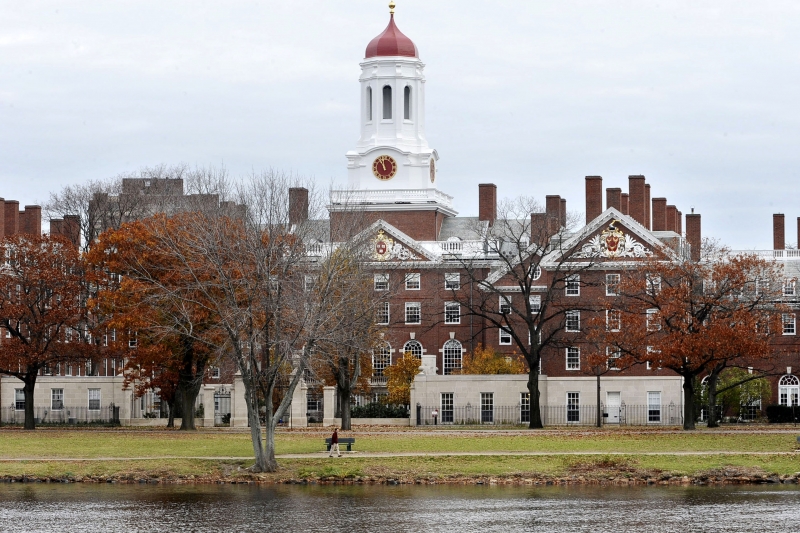It was named after the College’s first benefactor, the young minister John Harvard of Charlestown, who upon his death in 1638 left his library and half his estate to the institution. A statue of John Harvard stands today in front of University Hall in Harvard Yard, and is perhaps the University’s best known landmark.

Harvard University has 12 degree-granting Schools in addition to the Radcliffe Institute for Advanced Study. The University has grown from nine students with a single master to an enrollment of more than 20,000 degree candidates including undergraduate, graduate, and professional students. There are more than 360,000 living alumni in the U.S. and over 190 other countries.
Harvard University Archives
The Harvard University Archives are maintained by the Harvard University Library system and are a great resource to access Harvard’s historical records.
The Harvard Shield
On Sept. 8, 1836, at Harvard’s Bicentennial celebration, it was announced that President Josiah Quincy had found the first rough sketch of the College arms – a shield with the Latin motto “VERITAS” (“Verity” or “Truth”) on three books – while researching his History of Harvard University in the College Archives. During the Bicentennial, a white banner atop a large tent in the Yard publicly displayed this design for the first time. Until Quincy’s discovery, the hand-drawn sketch (from records of an Overseers meeting on Jan. 6, 1644) had been filed away and forgotten. It became the basis of the seal officially adopted by the Corporation in 1843 and still informs the version used today.
Why Crimson?
Crimson was officially designated as Harvard’s color by a vote of the Harvard Corporation in 1910. But why crimson? A pair of rowers, Charles W. Eliot, Class of 1853, and Benjamin W. Crowninshield, Class of 1858, provided crimson scarves to their teammates so that spectators could differentiate Harvard’s crew team from other teams during a regatta in 1858. Eliot became Harvard’s 21st president in 1869 and served until 1909; the Corporation vote to make the color of Eliot’s bandannas the official color came soon after he stepped down.
But before the official vote by the Harvard Corporation, students’ color of choice had at one point wavered between crimson and magenta – probably because the idea of using colors to represent universities was still new in the latter part of the 19th century. Pushed by popular debate to decide, Harvard undergraduates held a plebiscite on May 6, 1875, on the University’s color, and crimson won by a wide margin. The student newspaper – which had been called The Magenta – changed its name with the very next issue.
*U.S. Presidents and Honorary Degrees*
After George Washington’s Continental Army forced the British to leave Boston in March 1776, the Harvard Corporation and Overseers voted on April 3, 1776, to confer an honorary degree upon the general, who accepted it that very day (probably at his Cambridge headquarters in Craigie House). Washington next visited Harvard in 1789, as the first U.S. president.
Other U.S. presidents to receive an honorary degree include:
1781 John Adams
1787 Thomas Jefferson
1822 John Quincy Adams
1833 Andrew Jackson
1872 Ulysses S. Grant
1905 William Howard Taft
1907 Woodrow Wilson
1917 Herbert Hoover
1919 Theodore Roosevelt
1929 Franklin Delano Roosevelt
1946 Dwight Eisenhower
1956 John F. Kennedy
USA RECORDS ORGANIZATION_USKINGS





![[HONORARY PROFESSOR OF RECORD FOR PRACTICE AND EMPIRICAL RESULTS – 2024] RECORD HOLDER CHU BAO QUE (BAC GIANG PROVINCE, VIETNAM)](https://uskings.us/wp-content/uploads/2024/05/IMG_0386-218x150.jpg)


